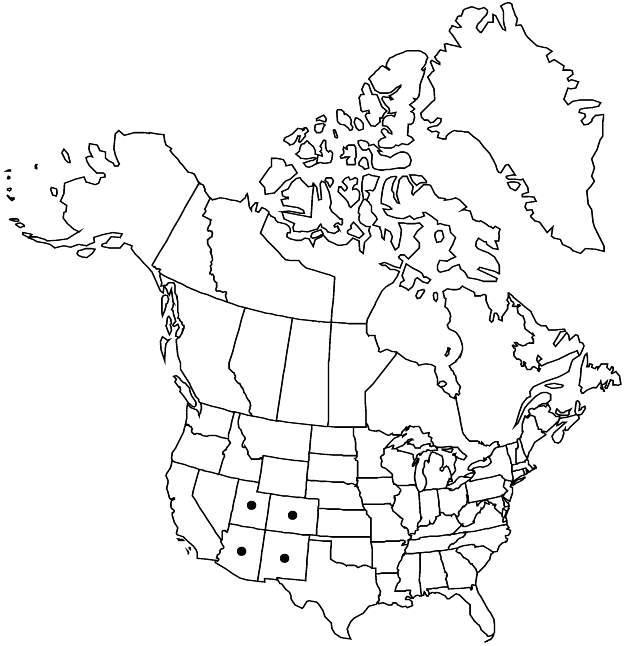Eriogonum leptocladon
in War Department [U.S.], Pacif. Railr. Rep. 2(1): 129. 1857.
Shrubs, erect to spreading, not scapose, (2–) 3–10 (–12) × 5–15 (–20) dm, white-tomentose to floccose, or green and nearly glabrous. Stems spreading, often without persistent leaf-bases, up to 1/2 height of plant; caudex stems absent or spreading in moving sand; aerial flowering-stems spreading, slender, solid, not fistulose, 0.3–1 dm, white-tomentose, floccose to glabrate or glabrous. Leaves cauline, 1 per node; petiole 0.2–0.5 cm, tomentose to floccose; blade linear-lanceolate to linear-oblanceolate to narrowly oblong, or lanceolate to narrowly elliptic, 1.5–4 × 0.2–0.8 (–1.2) cm, densely white-tomentose abaxially, less so and greenish adaxially, margins plane, infrequently revolute. Inflorescences cymose, open, 5–40 × 10–50 cm; branches dichtomous proximally, often with involucres racemosely arranged proximally, tomentose to floccose or glabrate, occasionally glabrous; bracts 3, scalelike, linear to triangular, 1–3 (–6) mm. Peduncles absent. Involucres 1 per node, turbinate to turbinate-campanulate, 1.5–3 × 1–2 mm, tomentose to floccose or glabrous; teeth 5, erect, 0.4–0.7 mm. Flowers (2–) 2.5–3.5 mm; perianth white or pale-yellow to yellow, glabrous; tepals connate proximal 1/4–1/3, essentially monomorphic, oblong to broadly obovate; stamens slightly exserted, 2–4 mm; filaments sparsely pilose proximally. Achenes light-brown, 2.5–3.5 mm, glabrous except for minutely papillate beak.
Distribution

Ariz., Colo., N.Mex., Utah
Discussion
Varieties 3 (3 in the flora).
Eriogonum leptocladon is localized on moving sands on the Colorado Plateau. It is not unusual, therefore, for portions of the shrub to be buried in sand, especially the main, woody trunk from which the flowering stems arise. In the Four Corners area three species share portions of overlapping ranges, and herbarium material from there can be difficult to separate. In northwestern New Mexico, var. ramosissimum approaches E. effusum, and in eastern San Juan County the two can be distinguished only by the open, spreading inflorescence branching pattern of var. ramosissimum as compared to the densely branched, compact inflorescence of E. effusum. In the field, the former is confined to sandy areas whereas the latter is typically on heavier, usually clayey soils. In south-central Utah, var. ramosissimum approaches E. nummulare. There, both are found on moving sands, and only the degree of stoutness of the branches can be used to differentiate them when cauline leaves are absent. For the most part, the inflorescence branches of E. nummulare are more rigid and stouter than those of var. ramosissimum, which tend to be flexible and slender. When leaves are present, those of the former are broader and more apically rounded compared to those of the latter.
Selected References
None.
Lower Taxa
Key
| 1 | Perianths pale yellow to yellow | Eriogonum leptocladon var. leptocladon |
| 1 | Perianths white | > 2 |
| 2 | Flowering stems and inflorescence branches tomentose, rarely floccose | Eriogonum leptocladon var. ramosissimum |
| 2 | Flowering stems and inflorescence branches glabrous | Eriogonum leptocladon var. papiliunculi |
"/2" is not declared as a valid unit of measurement for this property."dm" is not declared as a valid unit of measurement for this property."dm" is not declared as a valid unit of measurement for this property."dm" is not declared as a valid unit of measurement for this property.